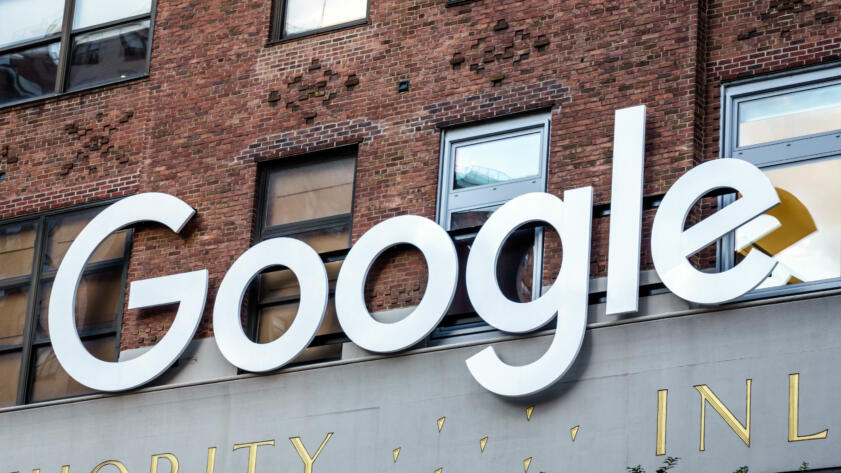Four years after offering special placement in a “top stories carousel” in search results to entice publishers to use a format it created for mobile pages, called AMP, Google announced last week that it will end that preferential treatment in the spring.
“We will prioritize pages with great page experience, whether implemented using AMP or any other web technology, as we rank the results,” Google said in a blog post.
The company had indicated in 2018 that it would drop the preference eventually. Last week’s announcement of a concrete timeline comes less than a month after the Department of Justice called Google a “monopoly gatekeeper to the internet” in a lawsuit alleging antitrust violations and as pressure mounts on officials in the European Union, which has already fined Google more than $9 billion for antitrust violations.
“I did always think AMP posed antitrust concerns,” said Sally Hubbard, author of the book “Monopolies Suck” and an antitrust expert with the Open Markets Institute. “It’s, ‘If you want to show up on the top of the search results, you have to play by our rules, you have to use AMP.’ ”
Google spokesperson Meghann Farnsworth did not address the timing of the change but said AMP is not dead, saying the company is “fully committed to AMP as a technology.”
She said AMP continues to be required for certain features that “are not technically possible” without it, such as “swipe to visit” in Google Images, and that it’s “preferred” in the “for you” feed in Google’s news reading app, Google Discover.
Whatever prompted the timing of the change, some news sites are relieved that they won’t have to keep using Google’s preferred mobile standard.
We are encouraged to see Google beginning to outline a path away from AMP.
Robin Berjon, The New York Times
“We are encouraged to see Google beginning to outline a path away from AMP,” Robin Berjon, head of data governance at The New York Times, said in a written statement in response to questions from The Markup. “It’s important Google addresses the core challenge with the format, so that it is no longer a requirement for news products and performance ranking.”
News publishers and others have been griping about AMP for years. Some called it Google’s attempt to exert the same kind of control over the larger web that Facebook exerts over posts in its closed system.
That’s because AMP is more than just a set of formatting rules. Once a website sets up an AMP page, Google copies it and stores it on Google servers. When users click on the link for an AMP page in search results—or its news reading app—Google serves up that cached version from its servers.
“AMP keeps users within Google’s domain and diverts traffic away from other websites for the benefit of Google,” read a 2018 open letter signed by more than 700 technologists and advocates. “At a scale of billions of users, this has the effect of further reinforcing Google’s dominance of the Web.”
Nearly nine in 10 internet searches in the U.S. are completed on Google, according Statcounter. The second most popular search engine, Microsoft’s Bing, has only seven percent of the market, less than one in 10 U.S. searches.
An engineer at a major news publication who asked not to be named because the publisher had not authorized an interview said Google’s size is what led publishers to use AMP. Chinese search engine Baidu launched an initiative similar to AMP called MIP, which did not gain traction among U.S. publishers. Bing also uses AMP, but lacks the leverage that Google has over publishers.
“If [only] Bing did it, you would be like, ‘No it’s fine.’ Nobody would use it,” the engineer said.

Show Your WorkGoogle the Giant
How We Analyzed Google’s Search Results
Novel categorizations and “staining” techniques uncovered how much space on the search results page Google dedicates to itself
In an analysis published by The Markup earlier this year of 15,269 popular searches on Google, we found that AMP-enabled results appeared often, taking up more than 13 percent of the first results page. Google took another 41 percent of the page for its own products.
At the time, Google spokesperson Lara Levin called The Markup’s methodology “flawed and misleading.”
Hubbard, of the Open Markets Institute, said she expects state attorneys general who have been investigating Google and other major tech companies to file a lawsuit looking at how Google uses search to direct people to its own properties.
Some industry experts now speculate that the change to the top stories carousel may ultimately make the AMP format obsolete.
The initiative, which originally stood for Accelerated Mobile Pages, restricts the size and functionality of a mobile website in the name of speed and user experience. It’s sometimes referred to as putting the web “on a diet.”
As the news industry struggled over the past decade, with dropping newspaper subscription rates and ad revenue and plateauing online traffic leading to massive job losses, many publishers adopted AMP in hopes that it would help their bottom lines. Most of the roughly 2,000 members of the News Media Alliance, a trade organization that represents newspapers, use it.
“They don’t really feel there is a choice,” said Danielle Coffey, the group’s general counsel and senior vice president.
Her opinion is widely shared.
“We essentially have a coercion by Google upon publishers to allow people to host their content,” said Andrew Betts, a former member of the Technical Architecture Group at the international web standards organization W3C, who has written about his concerns with AMP. “And publishers who decide they don’t want that to happen because they want to serve their own content, thanks very much, will not ever appear in the first set of search results.”
In some cases, it’s existentially problematic.
Andrew Betts, formerly with W3C
“That’s a big deal,” he added. “In some cases, it’s existentially problematic.”
A Google executive once referred to AMP as an “altruistic” effort to make the web better. In its response to written questions for the record last year from Rep. David Cicilline (D-RI), who chairs the House Judiciary antitrust subcommittee, Google said the top stories carousel on mobile required AMP for technical reasons. But Google links to its cached AMP version of a page, when it exists, appear on all parts of mobile search results, not simply that carousel.
AMP makes the mobile web more standardized, enabling stories or just excerpts to be embedded and displayed outside of the websites where they were originally published. This feature is potentially useful as Google displays more and more content in curated “modules” on the search results page, an unpopular practice in its own right.
Many news sites report that switching to AMP has increased their web traffic, in large part due to the increased exposure in the top stories carousel. But the financial benefits and reader loyalty haven’t necessarily followed the added clicks.
The News Media Alliance published a white paper in June that said its members reported that AMP pages bring in less revenue and convert fewer readers to subscribers. One news organization said visitors to stories delivered in AMP read fewer articles per visit—what the alliance referred to as “one and done.” Another discovered that the number of subscribers per million readers was 39 percent lower for readers that came in through an AMP link.
39%
Fewer readers became subscribers if they came to the site through AMP, according to one member of the News Media Alliance.
Farnsworth, the Google spokesperson, replied that others have found financial success with AMP, and pointed to a lifestyle website, linking to a write-up in an AMP success stories page.
“There are various factors that affect the monetization potential of any page,” she said.
The costs of supporting AMP can also be significant for some publishers, said Coffey, of the News Media Alliance. “For our smaller guys, it’s somewhat difficult just because they don’t always have the resources to be able to put into formatting content in a specific way, and there’s also just the cost associated with opportunity cost” of spending time on that instead of something else, she said.
And AMP sometimes causes issues that publishers lack the power to fix on their own. In one prominent example, publishers discovered there was no way to allow users to opt out of having their data sold, a requirement under the California Consumer Privacy Act, which went into effect this year.
Google says it doesn’t consider AMP a factor in “search ranking,” though it has said page-loading speed is a factor.
A coalition of publishers, including The New York Times, The Washington Post, Gannett, and others, proposed last month that tech and media companies collaborate on an alternative to AMP that would allow platforms to aggregate web content without “leveraging market power” to do so.
Matt Dorville, SEO manager for BuzzFeed, said he’s “skeptical” about using AMP once Google stops requiring it for the top stories carousel. He plans to do extensive testing to ensure abandoning the format doesn’t kill the site’s traffic and will monitor the choices of other major players who use AMP, like Axios and The Guardian.
“You never really want to be the first person out the gate making these changes,” he said.





